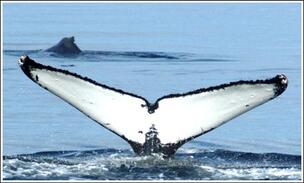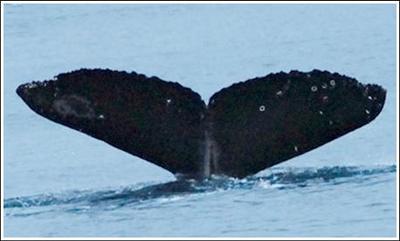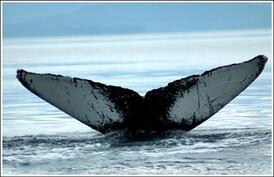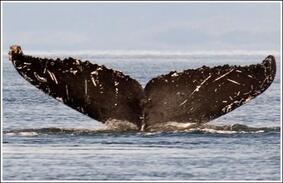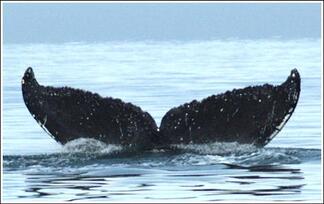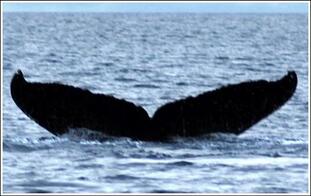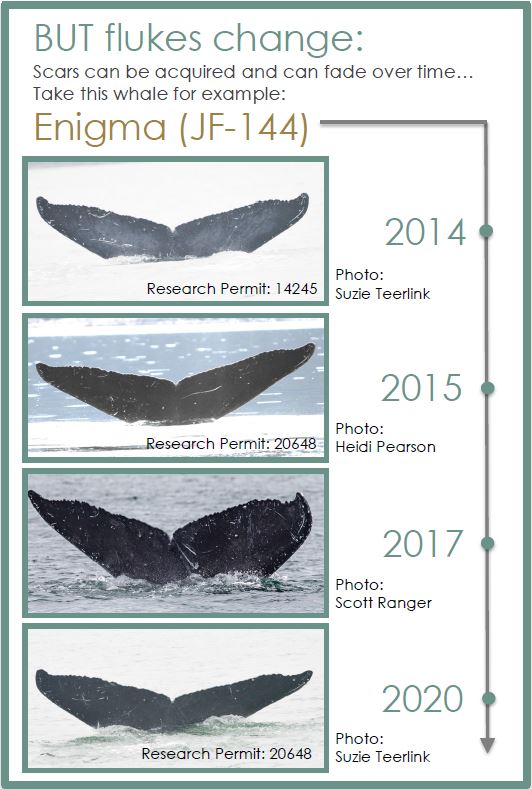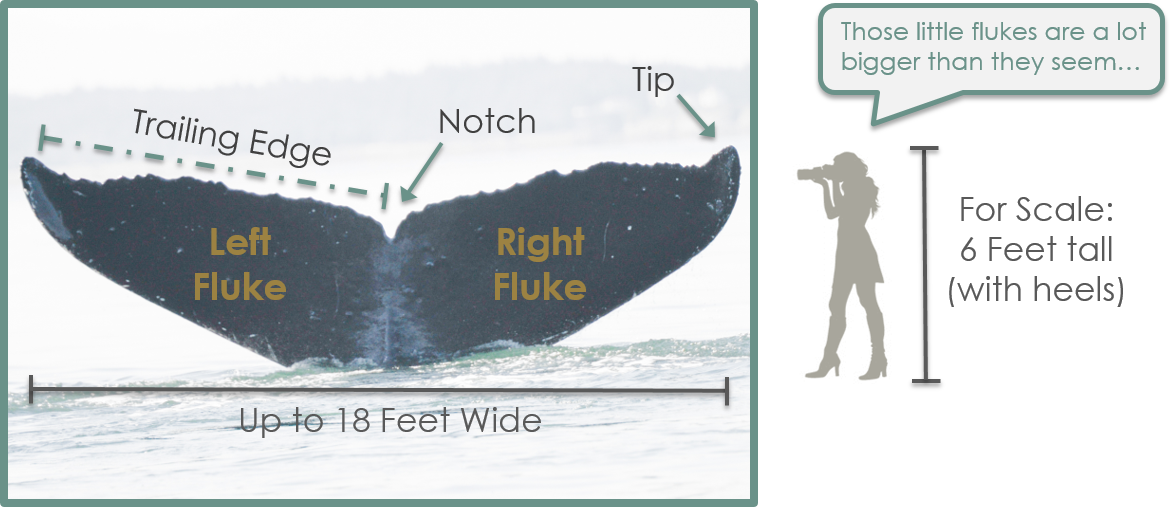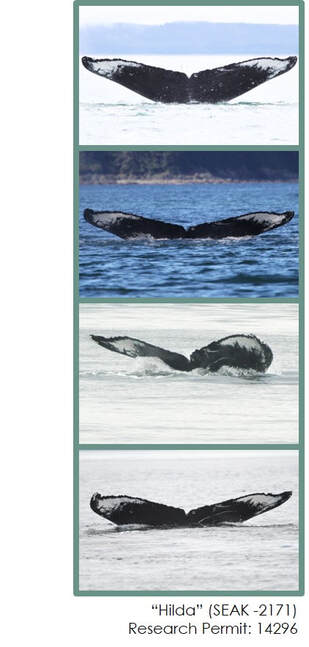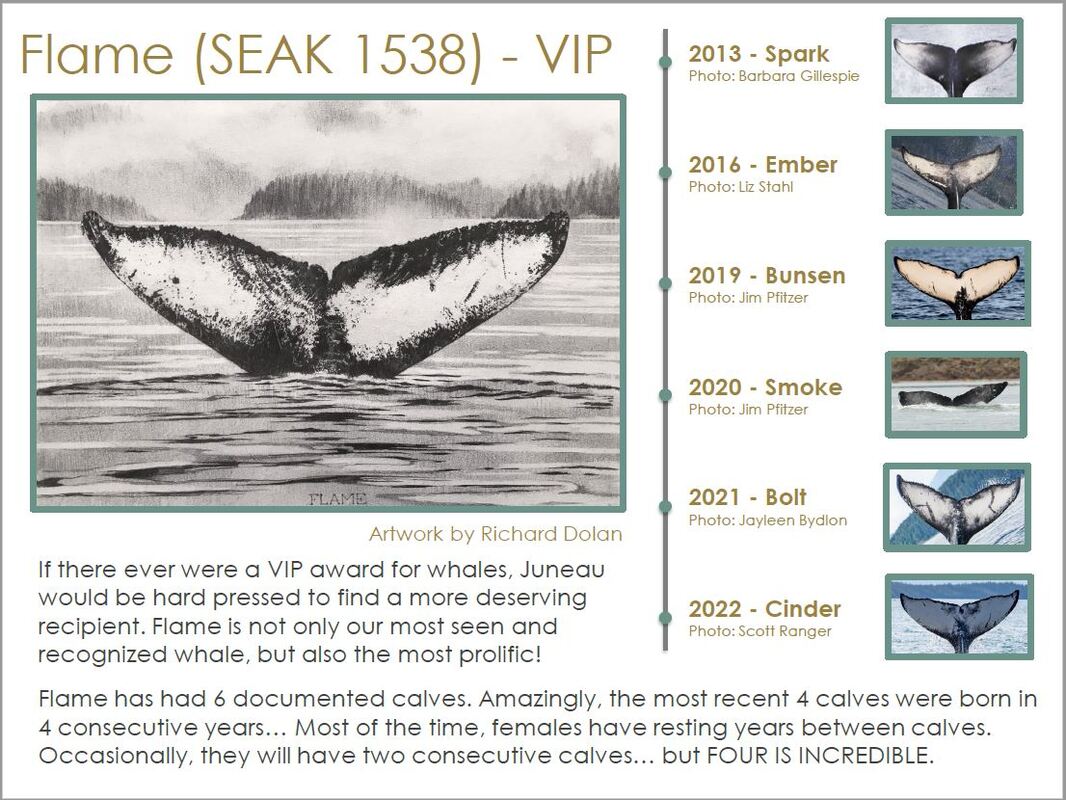Matching Flukes is Pattern Recognition
Fortunately, as humpbacks descend on deeper, foraging dives, they arch their back steeply and often raise their flukes or tail into the air. If positioned correctly, you can snap a photo of the ventral side (underside) of their flukes as they are diving. This photo can then be used to identify each animal. A close look at a good fluke photo can reveal specific markings that are unique to each whale. This method was pioneered by Juneau researchers Chuck Jurasz and Virginia Palmer in the 1960's.
Matching your own fluke photos
When possible, use the trailing edge when matching flukes. The peaks and valleys tend to persist through the whale’s life and can help you identify it.
You can lighten a photo by changing the exposure and/or contrast. This will often help to reveal markings.
It often helps to rotate the photo so the flukes are horizontal in the frame and crop the photo. Always keep a copy of the original!
When in doubt, upload your photo to Happywhale.com. The powerful, automated matching algorithm will match flukes for you with unbelievable accuracy!
You can lighten a photo by changing the exposure and/or contrast. This will often help to reveal markings.
It often helps to rotate the photo so the flukes are horizontal in the frame and crop the photo. Always keep a copy of the original!
When in doubt, upload your photo to Happywhale.com. The powerful, automated matching algorithm will match flukes for you with unbelievable accuracy!
Photo ID allows us to track humpback whales individuals without even touching them
